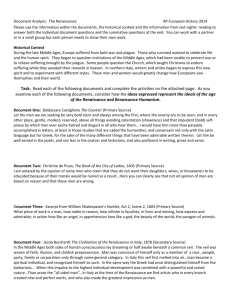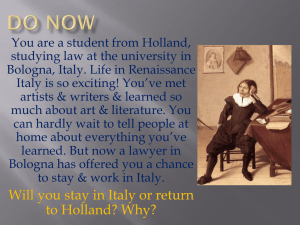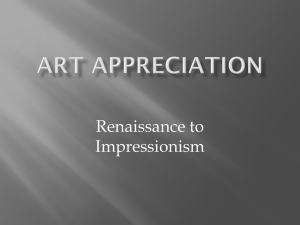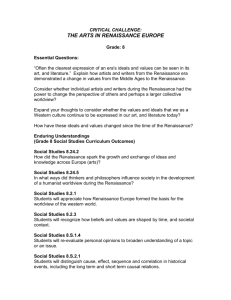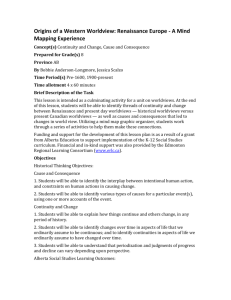Continuity and Change:
advertisement
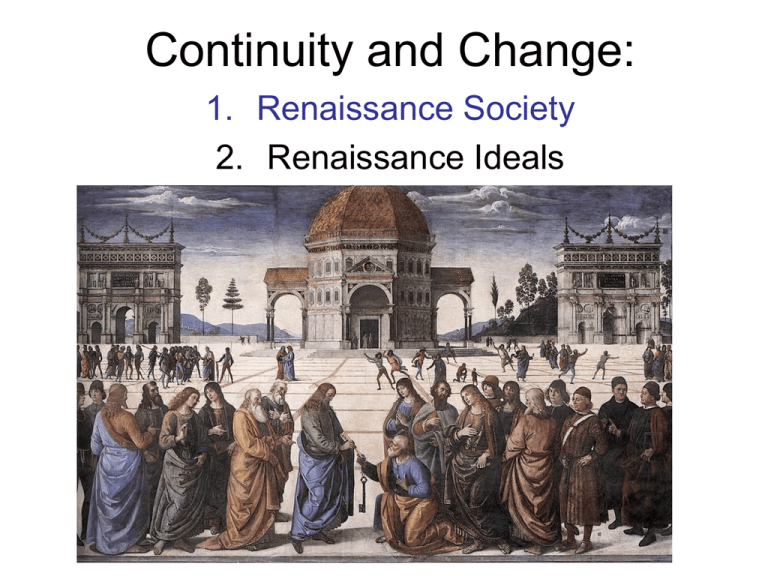
Continuity and Change: 1. Renaissance Society 2. Renaissance Ideals Continuity: • Family primary economic unit; marriage NOT based on love • Subsistence SOL for the masses • No cures for most diseases; medical knowledge is VERY limited • Religion, church center of life Change: • Possibility of progress glimpsed by some • Population shifts after the Plague of 1348 • Urbanization in Italian peninsula • Civic pride in Italian citystates • Wider choices in consumer goods; more luxuries available; small but growing urban bourgeoisie enjoys above-subsistence SOL Continuity and Change: 1. Renaissance Society 2. Renaissance Ideals What are the indexes of modernity? • Pressures for increased democracy • Loosening of old customs • Questioning of ancestral religions; increased secularization • Demands for individual liberation • Expectation of a higher standard of living • Drive for more equality (gender, race, class, religious, nationalities) • Elaborate means of transportation and communication • Advanced science, medicine, hygiene, agriculture • Sophisticated means for fighting or negotiating peace • Complex networks of finance and trade “Renaissance thought went hand in glove with Renaissance art” What is humanism? A few quotes to prompt you: • “Man is born to be useful to other men” -Alberti • “The whole glory of man lies in activity” -Bruni • “What a piece of work man is” -Shakespeare, “Hamlet” Core concepts: • • • • • • • Individualism Civic humanism Secularism Liberal arts Sprezzatura Virtu Political science A. 1. 2. Which painting most likely comes from the Renaissance? Similarities? a. subject matter: b. techniques: B. 3. Differences? a. subject matter: b. techniques: 4. So…why is one picture more “typically” a Renaissance painting? Valla, on “The Donation of Constantine” “But am I foolish to inveigh against the audacity of this (forgery), instead of inveighing against the insanity of those who give him credence…would you not bid him name his author, produce his book, and the passage, to be explained by a reliable translator, before you could believe it?” – Lorenzo Valla 1. What tone does Valla use in this passage? 2. Why is Valla ‘inveighing against’ the document in question? 3. What are the Renaissance ideals Valla is attempting to champion? 1. 2. Identify the techniques used that help achieve naturalism. Explain how the techniques used in this sculpture express at least TWO Renaissance ideals. a. b. Michelangelo’s “David”



